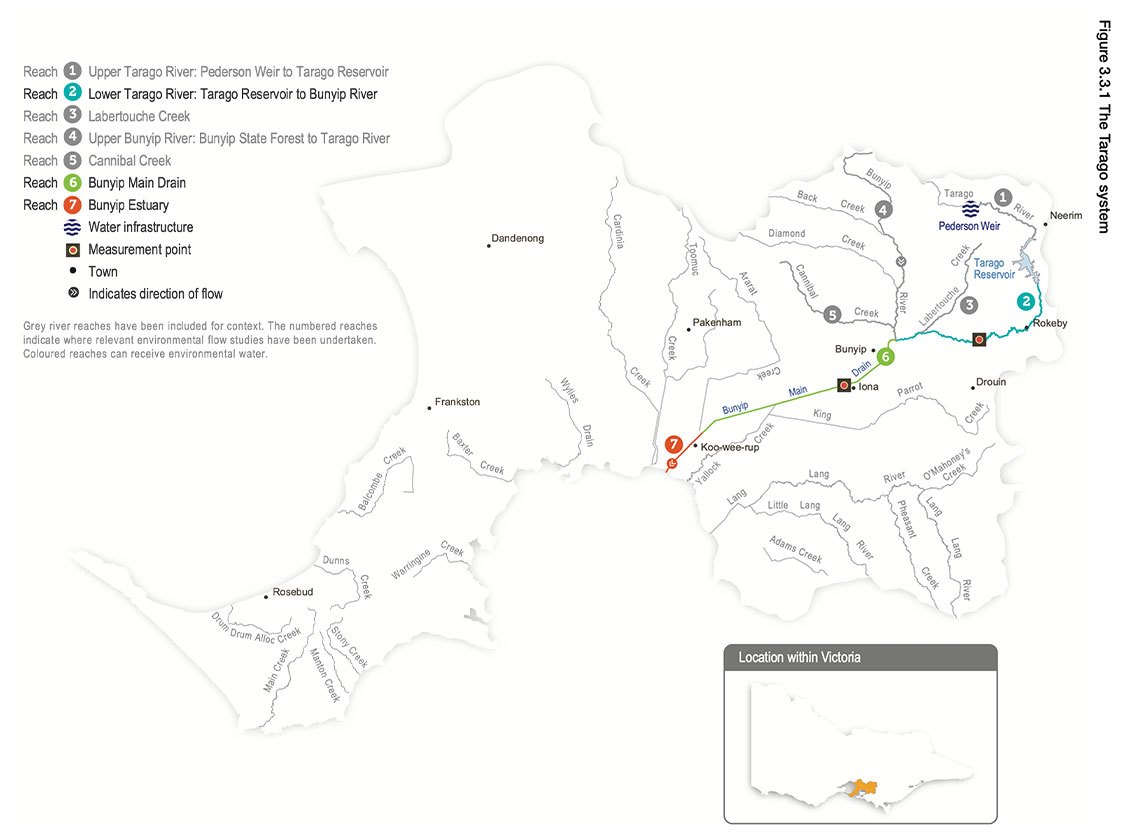Water available under the Tarago and Bunyip Rivers Environmental Entitlement 2009 is stored in and released from Tarago Reservoir. This water is primarily used to meet environmental objectives in reach 2, between the reservoir and the confluence of the Tarago and Bunyip rivers, as Figure 3.3.1 shows. Water for the environment delivered to reach 2 also supports environmental flow recommendations in reach 6 (Bunyip Main Drain).
Year-round passing flows in the Bunyip and Tarago rivers are stipulated under both the environmental entitlement and Melbourne Water’s bulk entitlement. These passing flows contribute toward meeting the minimum low-flow requirements in summer/autumn and winter/spring, but they are less than the recommended minimum flows. The passing flows do not provide any of the freshes or greater flows that are needed throughout the year to support environmental outcomes.
Water released to meet irrigation demands creates variable flow patterns in the Tarago and Bunyip rivers throughout the year. The magnitude and timing of these releases can influence environmental outcomes, and Melbourne Water continues to work with Southern Rural Water to optimise the shared value derived from irrigation releases.


